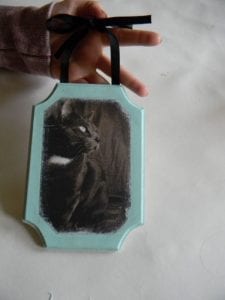Last Updated on November 22, 2022 by teamobn
Do you need to have your faucet replaced? Now before you remove the old one from the sink, your replacement should obviously be on hand and ready.
Faucets nowadays usually come with pre-attached flexible water hosess which you can directly connect to the shutoff valves underneath your sink. If the pre-attached flexible water hose of your newly bought faucet is of the right length, then it’s good. However in some cases extensions are still needed to make the connections.

To save time and make your task more efficient, check current supply lines and hoses to see if they are in need of replacements as well. This way you won’t have to go back to the hardware store after discovering a damage or leak later on.
If you’ve got everything prepared and your old faucet removed, you can now proceed to install your new unit.
(Want to learn how to remove a faucet? Head over to our How to Remove Old Faucets tutorial here.)
Materials:
- Faucet
Tools:
- Basin Wrench
- Water-pump Pliers
- Adjustable Wrenches
Steps:
1. To attach the faucet to the sink, place a rubber gasket, retainer ring and locknut onto the threaded tailpiece. Use a basin wrench or water-pump pliers to tighten the locknut.
2. If your faucet comes with a decorative cover plate, you can secure it from below by screwing locknuts with washers onto the cover plate bolts.
3. Now connect the pre-attached flexible water hose to the shutoff valves using compression fittings.
4. Make sure that the hoses are installed appropriately — the red-labelled tube should be connected to the hot water supply line and the blue-labelled tube should be connected to the cold water supply line.
A Word of Caution!
Burst flexible water hoses cause more than 20% of all water damage claims. Unfortunately, they have even been known to burst within months of their installation. Flexible hoses can leak up to 400 gallons (1,500 litres) of water per hour! That’s a vast amount of water and can easily cause irreversible water damage to your house.
The problem with flexible water hoses…
Flexible hoses comprise and inner rubber/plastic tube and an outer tube made from braided stainless wires. The rubber tube inside flexible hose is designed to expand under pressure while the stainless steel braiding is designed to limit that expansion to prevent the inner tube from ‘ballooning’.
If the stainless steel braiding is faulty, damaged or simply fails and breaks, water pressure will cause the rubber lining to bulge out of the restraining sleeve. The bulge is then likely to rupture as the water pressure builds, leading to an uncontrolled flow under your sink or basin.
Hints to minimise the risk of a flexible water hose bursting:
1/ Twisting or stretching the hose to make it fit during installation increases the risk of creating a weak point in the hosing. Ensure you have bought a hose of adequate length.
2/ Buy only good quality, standards approved hoses. Saving a couple of dollars here could cost you thousands.
3/ It’s essential to prevent over or under tightening the retaining nuts at each end of the hose. If they are too tight, you might damage the seal. On the other hand, if they are not tight enough, they will leak. Consider calling a plumber to install if you doubt your own abilities.

4/ If possible, have a stopcock installed under sinks and basins so that you can respond quickly of a leak occurs. Cutting of water to the entire home will stop the leak but will be extremely inconvenient while re pairs are done. A stop-cock as shown below is meant to control water to that single outlet.

5/ Allow for ventilation in cupboards to reduce humidity in closed cupboards. Many kitchen chemicals that are commonly stored under kitchen and bathroom sinks and basins contain chlorine. Chlorine will dissolve into hydrochloric acid when exposed to high humidity. That acid will corrode the stainless steel braining in your flexible water hoses.
6/ When leaving home for any extended period – such as a vacation, consider shutting off the water supply to your home. That may also mean turning off water heaters or anything that might ‘run dry’.
Happy plumbing!








